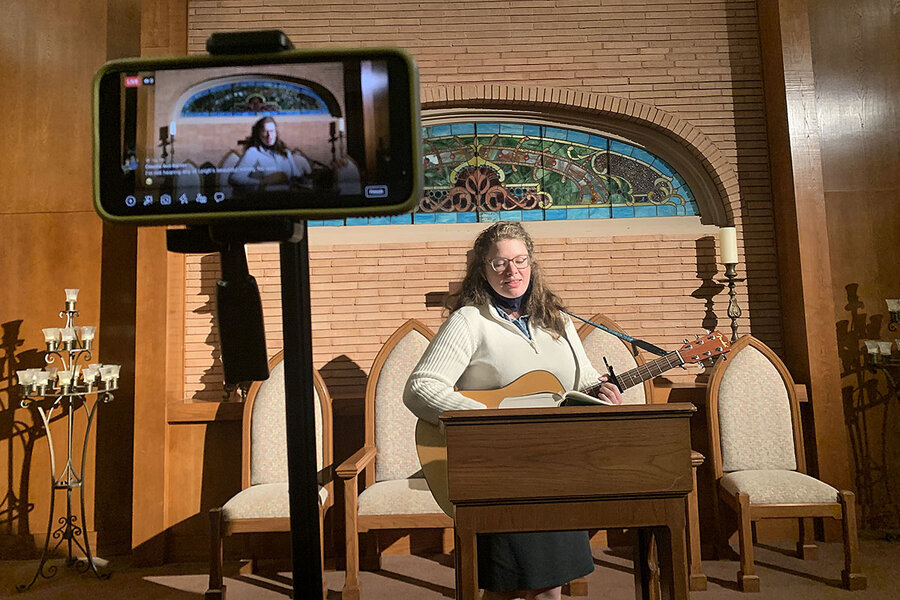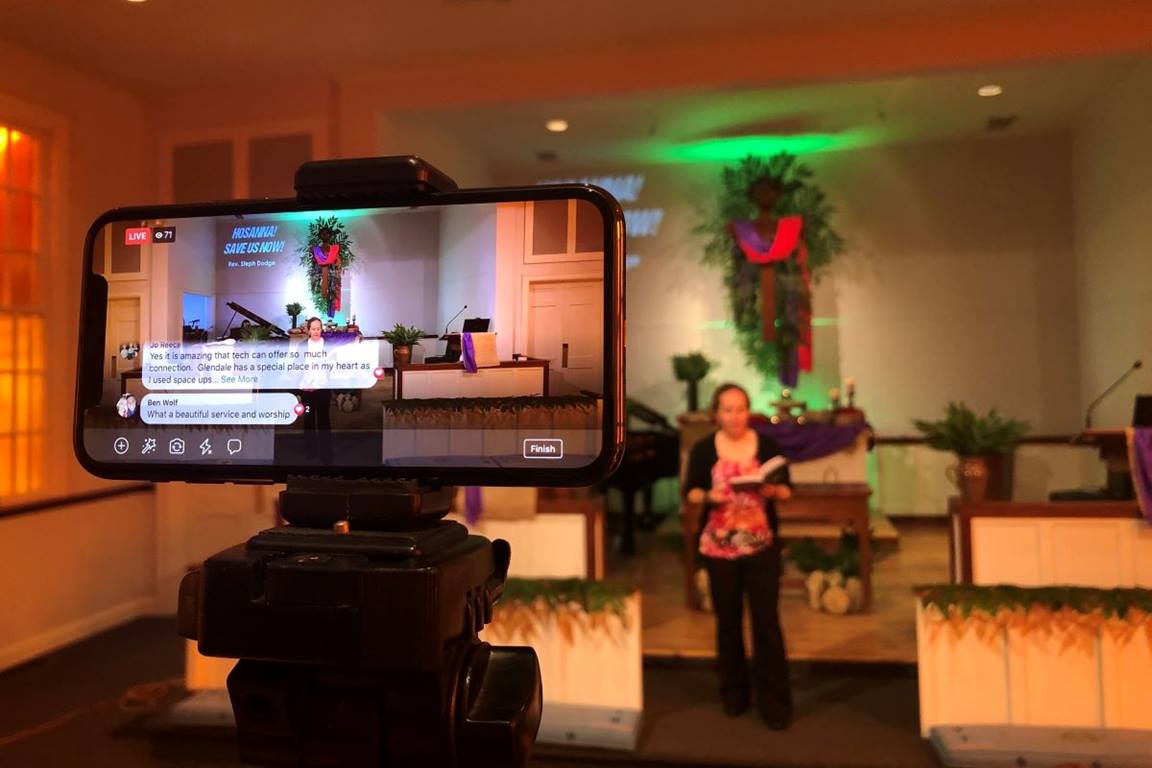Digital Worship And Virtual Religious Experience
The digital revolution has significantly transformed the way people interact, communicate, and even practice their faith. As technology continues to advance, religious communities around the world are increasingly embracing digital worshipand virtual religious experiences. This paradigm shift has given rise to new opportunities, challenges, and questions about the intersection of spirituality and technology. In this article, we delve into the phenomenon of digital worshipand virtual religious experiences, exploring the ways in which technology is reshaping traditional religious practices.
Embracing The Virtual Sacred Space
In recent years, the digital landscapehas become a powerful medium for religious congregations to foster a sense of community and spiritual connection. Embracing the virtual sacred space has revolutionized the way believers engage with their faith, offering a myriad of opportunities for worship, learning, and dialogue.
Online Worship Services
Religious congregations worldwide have embraced the potential of online platforms to broadcast their worship services. Livestreamed religious ceremonies have become a cornerstone of digital worship, allowing believers to participate in prayers, sermons, and rituals from the comfort of their homes.
Regardless of geographical constraints, congregants can come together virtually, breaking the barriers of distance and time zones. This virtual congregation creates an inclusive environment, enabling individuals from diverse backgrounds to unite in their shared devotion. Through online worship services, believers find solace and inspiration, fostering a profound spiritual connection with their faith community.
Virtual Religious Gatherings
Beyond the traditional confines of worship services, religious communities have extended their reach into the digital realm, organizing a wide array of virtual gatherings. These gatherings encompass online events, conferences, and study groups, serving as dynamic platforms for believers to engage in religious discussions, share knowledge, and deepen their understanding of faith. In these digital forums, participants from different corners of the world come together to explore religious teachings, traditions, and practices. The virtual space encourages open dialogue, fostering an atmosphere of mutual respect and understanding.
Cross-Cultural Dialogues:One of the remarkable aspects of virtual religious gatherings is their ability to facilitate cross-cultural dialogues. Believers from diverse religious backgrounds can interact, exchange ideas, and learn from one another. These interactions transcend geographical boundaries, enabling a broader perspective on religious beliefs and practices. Through respectful conversations and shared experiences, participants gain insights into the rich tapestry of global faith traditions, promoting tolerance and interfaith harmony.
Knowledge Exchange and Spiritual Growth:Virtual religious gatherings serve as hubs of knowledge exchange, where experts and scholars share their insights, leading discussions on religious texts, theology, and contemporary issues. Believers, irrespective of their physical location, can access this wealth of knowledge, enhancing their spiritual growth and understanding. The digital space acts as a catalyst for lifelong learning, encouraging believers to delve deeper into their faith, ask profound questions, and seek meaningful answers.
Expanding Access And Inclusivity - The Impact Of Online Worship
The advent of online worship has heralded a new era in religious practices, breaking down barriers and extending the reach of spiritual communities far beyond the confines of physical spaces. This digital revolution has not only revolutionized the way believers engage with their faith but has also fostered inclusivity and accessibility, making religious life accessible to a wider swath of the public.
Inclusivity Beyond Barriers
Online worship has dismantled geographical and physical barriers that once limited individuals' ability to participate in religious activities. People residing in remote areas, those with mobility challenges, or individuals with health issues that prevent them from attending in-person worship can now actively engage in religious practices. This inclusivity ensures that nobody is left behind, regardless of their circumstances. Places of worship are no longer confined to specific locations; they have expanded into the digital realm, welcoming all who seek spiritual solace and community.
A Sanctuary For The Vulnerable
For individuals who might feel marginalized or stigmatized in traditional religious settings, online worship provides a safe haven. It offers a space where people of various identities, beliefs, and backgrounds can participate in religious ceremonies without fear of judgment or discrimination. This virtual sanctuary becomes particularly crucial for members of the LGBTQ+ community, people exploring their faith, or those whose beliefs fall outside the mainstream. Online platforms offer acceptance and understanding, fostering a sense of belonging and spiritual fulfillment.
Overcoming Social Barriers
In many societies, social hierarchies and prejudices have historically restricted certain groups from fully participating in religious activities. Online worship transcends these barriers, promoting a sense of equality and unity among believers. Regardless of social status, ethnicity, or economic background, individuals can come together in the virtual sacred space. This leveling of the playing field fosters a sense of community where people are valued for their faith and devotion, rather than their societal standing.
Empowering Spiritual Seekers
Online worship not only caters to established believers but also empowers spiritual seekers and curious minds. It serves as an entry point for individuals exploring different faiths or questioning their beliefs. The digital platform offers a non-intimidating environment for seekers to learn, inquire, and participate at their own pace. This empowerment through accessible knowledge encourages a diverse range of individuals to engage with religious teachings, fostering a society that values religious literacy and understanding.
Navigating The Challenges Of Digital Worship - Balancing Convenience And Tradition
In the ever-expanding digital landscape of religious practices, there exist challenges that require thoughtful consideration and innovative solutions. As believers increasingly turn to digital worship platforms for their spiritual needs, they encounter hurdles that, if unaddressed, can hinder the full potential of virtual religious experiences.
Digital Divide
While digital worship endeavors to create an inclusive environment, the persistent digital divide poses a significant challenge. Not every individual has equal access to technology or a reliable internet connection. This disparity creates a divide, limiting the participation of marginalized communities who might lack the resources to engage fully in virtual religious experiences.
Addressing this digital gap is not just a matter of technology; it is a social imperative. Initiatives aimed at providing technology access, digital literacy training, and affordable internet connectivity can bridge this divide, ensuring that virtual religious practices are accessible to all, regardless of their socioeconomic status.
Loss Of Physical Presence
One of the profound challenges faced in the realm of digital worship is the loss of physical presence, a fundamental aspect of traditional religious gatherings. The warmth of shared physical proximity, the sensory experiences of lighting candles, the act of partaking in communal meals - these tangible rituals create a sense of belonging and spiritual immersion that can be challenging to replicate online. The absence of these rituals in digital worship can lead to a sense of disconnection and longing among believers.
Innovative Solutions And Adaptations
While the digital space cannot fully replicate the physical presence experienced in traditional worship, innovative solutions can mitigate this challenge. Augmented reality (AR) and virtual reality (VR) technologies, for instance, can create immersive digital environments where believers can engage in realistic rituals, enhancing their sense of presence and connection. Additionally, incorporating live streaming of physical rituals from religious spaces can provide a bridge, allowing virtual attendees to witness and participate in real-time ceremonies, fostering a more authentic experience.
Preserving The Essence Of Tradition
As believers embrace the convenience of digital worship, it is essential to find a balance that preserves the essence of tradition. Religious leaders and technologists can collaborate to develop online platforms that incorporate meaningful virtual rituals, ensuring that the core elements of religious practices are respected and maintained. Creating opportunities for believers to engage in acts of kindness, charitable deeds, and community service within their local physical communities can also reinforce the sense of shared purpose and togetherness that is integral to religious teachings.
Embracing The Spiritual Realm - Virtual Pilgrimages And Religious Apps
In the ever-evolving landscape of digital spirituality, the fusion of technology and faith has given rise to innovative avenues that enrich believers' spiritual experiences. Virtual pilgrimages and religious apps stand at the forefront of this transformative journey, offering believers unique opportunities to deepen their faith and connection to the divine.
Virtual Pilgrimages
The advent of virtual reality (VR) technology has ushered in a new era of religious exploration - virtual pilgrimages. Through the immersive power of VR, believers can embark on spiritual journeys from the confines of their homes. These virtual pilgrimages allow pilgrims to traverse sacred sites remotely, experiencing the ambiance of revered shrines and engaging in ancient rituals. While virtual pilgrimages do not replace the physicality of the traditional pilgrimage, they provide a remarkable alternative, enabling believers to connect with their religious heritage in a profound and meaningful way.
Immersive Spiritual Encounters
Virtual pilgrimages offer immersive spiritual encounters, allowing believers to virtually step into historical and sacred spaces. Through 360-degree visuals and interactive features, participants can engage in rituals, explore architectural marvels, and absorb the spiritual energy of revered sites. This immersive experience not only deepens believers' connection to their faith but also fosters a sense of awe and reverence for the rich tapestry of religious traditions.
Cultural And Educational Enrichment
Beyond the spiritual realm, virtual pilgrimages provide invaluable cultural and educational enrichment. Believers can delve into the history, art, and customs associated with sacred sites, gaining a comprehensive understanding of their religious heritage. These virtual explorations promote cross-cultural understanding, encouraging believers to appreciate the diversity of religious practices around the world.
Religious Apps And Mindfulness Tools
The rise of religious apps and mindfulness tools has revolutionized the way believers engage with their faith on a daily basis. These digital companions offer a myriad of features designed to enhance spiritual growth and mindfulness.
Daily Prayers And Scriptures
Religious apps provide believers with access to daily prayers, scriptures, and religious texts, enabling them to incorporate spiritual practices into their daily routines. These digital resources offer convenience and accessibility, allowing believers to nurture their faith wherever they go. Whether it's a daily prayer, a verse from sacred scriptures, or inspirational teachings, these apps serve as a constant source of spiritual guidance.
Meditation And Mindfulness Practices
Mindfulness apps rooted in ancient spiritual practices offer users tools for meditation, relaxation, and introspection. Guided meditation sessions, breathing exercises, and mindfulness practices align with religious teachings, promoting mental and emotional well-being. These apps cater to individuals seeking tranquility and spiritual growth in the fast-paced digital realm, serving as a sanctuary for inner reflection and peace.
Community And Support
Religious apps often feature community forums and support networks, connecting believers from diverse backgrounds. These digital communities foster a sense of belonging, allowing believers to share their spiritual journeys, seek advice, and find solace in the company of like-minded individuals. The sense of community nurtured by these apps strengthens believers' faith and provides emotional support in times of need. For more information on the intersection of faith and diverse backgrounds, you can explore resources like Fellowship Bible Church's guide on LGBT+ inclusion in Christianity.
Dispelling Myths About Digital Worship - Navigating The Reality Of Online Spirituality
In the rapidly evolving landscape of digital worship, numerous myths and misconceptions have surfaced, shaping public perceptions about the authenticity and efficacy of online religious practices. As believers increasingly embrace technology to connect with their faith, it is essential to address these myths and unravel the truth behind digital worship.
Myth - Digital Worship Is Impersonal And Detached
One common misconception about digital worship is that it lacks the personal touch and emotional depth of traditional religious gatherings. Skeptics argue that online interactions cannot replicate the warmth of physical presence and shared energy of a traditional religious community.
Reality 1
Digital worship, while conducted online, thrives on meaningful interactions and shared spirituality. Virtual congregations foster a sense of community through interactive features, live chats, and shared experiences. Believers can connect, support one another, and engage in heartfelt discussions, breaking down the barriers of physical distance. The digital space becomes a sanctuary for emotional expression, prayers, and communal bonding, proving that genuine connections can thrive in the virtual realm.
Myth - Digital Worship Is Superficial And Disrespectful To Tradition:
Some critics argue that digital worship, with its innovative features and interactive elements, dilutes the authenticity of religious practices, disrespecting age-old traditions and rituals.
Reality 2
Digital worship platforms are designed with utmost respect for religious traditions and customs. Religious leaders and technologists collaborate to ensure that online practices adhere to the core tenets of faith.
Virtual rituals and ceremonies are often overseen by religious authorities, preserving the sanctity of tradition while embracing technological advancements. Far from being superficial, digital worship can enhance the depth of religious experiences, offering believers unique opportunities for spiritual growth and exploration.
Myth - Digital Worship Is Exclusively For The Younger Generation:
A prevalent misconception is that digital worship primarily appeals to the younger, tech-savvy generation, leaving older believers feeling disconnected and marginalized.
Reality 3
Digital worship is inclusive, catering to believers of all ages. While younger generations might naturally adapt to digital platforms, older believers find solace and convenience in online religious practices. Many digital worship initiatives offer user-friendly interfaces and support services, ensuring that individuals of all ages can navigate the virtual realm with ease. The inclusivity of digital worship promotes intergenerational engagement, fostering a sense of unity and understanding among diverse age groups.
Myth - Digital Worship Is Isolated And Alienating:
Skeptics argue that digital worship isolates believers, leading to a sense of disconnection and alienation from their religious community.
Reality 4
Digital worship platforms actively encourage social interaction and community engagement. Virtual congregations host online events, discussion forums, and support networks, fostering a sense of belonging among participants. Believers can share their spiritual journeys, offer prayers, and find support from a global community. In essence, digital worship promotes social connectivity, ensuring that believers remain closely knit despite physical distances.
Digital Worship - FAQs
What Is A Virtual Worship?
Virtual worship refers to religious or spiritual practices conducted in a digital or online environment. It involves using technology, such as computers, smartphones, and the internet, to create a virtual space where believers can participate in religious activities, ceremonies, prayers, or teachings remotely. Virtual worship allows individuals to engage with their faith community and religious leaders from the comfort of their homes, transcending geographical limitations and physical boundaries.
What Is Online Worship?
Online worship is a specific form of virtual worship conducted over the internet. It encompasses various religious activities, including worship services, prayers, sermons, religious teachings, and rituals, that are livestreamed or prerecorded and made accessible to believers through online platforms. Online worship services often involve streaming religious ceremonies, allowing participants to join remotely by watching and interacting through live chat features. Online worshipfacilitates communal religious experiences, enabling believers to connect, pray, and engage in spiritual practices together in the digital realm.
What Are The 5 Types Of Worship?
Different religions and belief systems encompass various forms of worship practices. While the specific types of worship can vary, here are five general categories that encapsulate diverse worship practices:
- Adoration:Adoration worship involves praising and honoring the divine. It often includes expressions of awe, reverence, and gratitude towards a higher power or deity. Adoration can take the form of prayers, hymns, or rituals that acknowledge the greatness and majesty of the divine being.
- Confession:Confession worship involves acknowledging and repenting for sins or wrongdoings. It is a form of worship where believers express remorse, seek forgiveness, and commit to spiritual purification. Confession is prevalent in many religious traditions and is often done privately, within a religious community, or through formal religious rituals.
- Thanksgiving:Thanksgiving worship involves expressing gratitude for blessings, provisions, or positive experiences. Believers offer thanks to the divine for the gifts of life, health, family, and other aspects of their existence. Thanksgiving worship often includes prayers, rituals, or ceremonies that focus on appreciating the goodness in one's life.
- Supplication:Supplication worship involves making requests or petitions to the divine. Believers seek guidance, protection, healing, or assistance in various aspects of their lives. Supplication can take the form of personal prayers, collective rituals, or religious ceremonies where believers ask for divine intervention or support.
- Sacrifice:Sacrifice worship involves offering something valuable to the divine as a symbolic gesture of devotion, surrender, or atonement. Sacrifices can be tangible items, acts of service, or personal commitments made in the name of faith. Sacrificial worship is found in many religious traditions and symbolizes the believer's dedication and loyalty to the divine.
Conclusion
In conclusion, digital worship and virtual religious experiences represent a complex interplay between spirituality and technology. While they provide unprecedented accessibility and new avenues for religious expression, challenges related to inclusivity, authenticity, and ethics must be carefully navigated. As society continues to evolve, striking a balance between the sacred and the digital will be crucial in preserving the essence of religious practices while embracing the transformative potential of technology.




